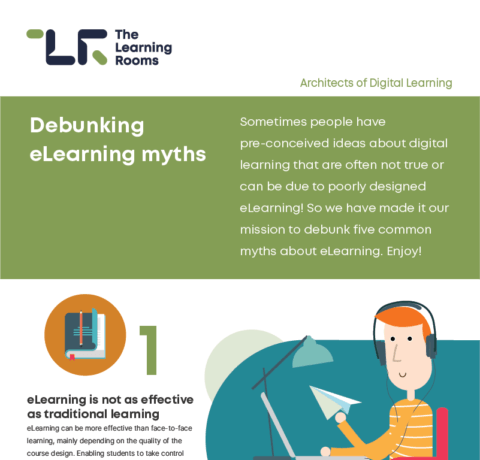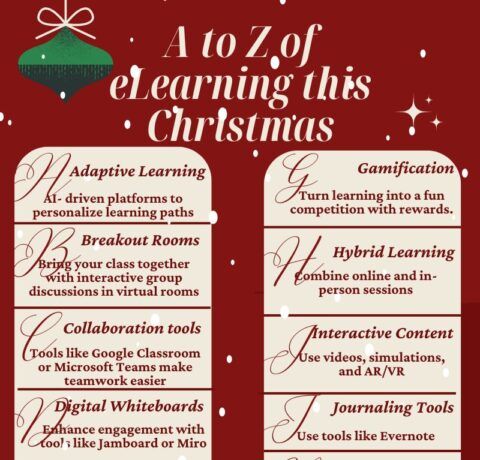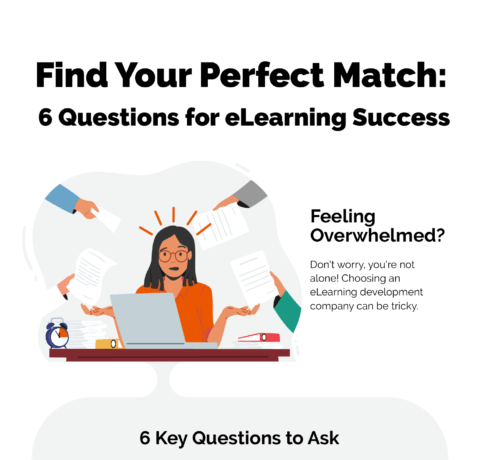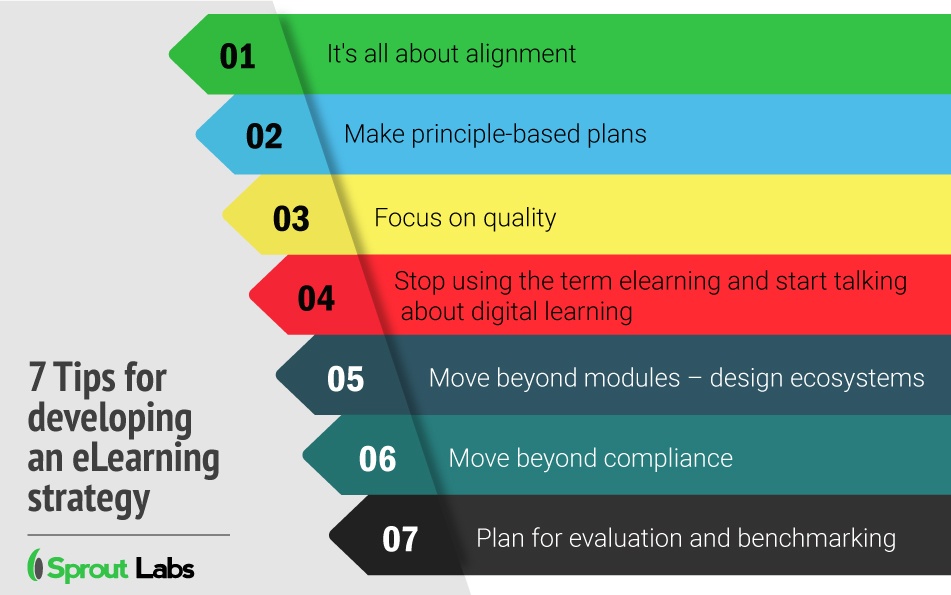7 Tips for Developing an eLearning Strategy Infographic
The 7 Tips for Developing an eLearning Strategy Infographic provides some tips and ideas to think about when developing an elearning strategy.
1. It's all about alignment
Your eLearning strategy should be aligned with your organisation’s goals for the future. If you’ve been using elearning for a while it’s likely that it is already well matched to your wider L&D strategy. If that’s the case it becomes relatively easy to ensure continued alignment with the goals of the organisation as a whole. If you're just starting out in elearning or planning to grow your capabilities, a separate elearning strategy might prove useful.
2. Make principle-based plans
A principle-based approach enables flexibility. It defines the underpinning ideas for future approaches but doesn’t necessarily describe how this might be achieved. Principle-based plans enable change, and have become common in IT for this reason. If you're using a principle-based approach you will also need to develop a roadmap to provide clear guidance for everyone on how to achieve the principles. This roadmap can then be revised regularly depending your organisation’s needs.
3. Focus on quality
eLearning has a quality problem. Its adoption within an organisation has typically been driven by saving money without consideration for effective learning principles. In both the short and long term it is better to focus on a quality program that really engages the learners and creates great outcomes for the organisation.
4. Stop using the term elearning and start talking about digital learning
Marketing professionals no longer talk about online or mobile marketing, they talk broad-term digital marketing. In the past I’ve written about how elearning is dead. Using ‘digital learning’ creates a better alignment with how digital technologies are being talked about in the rest of your organisation.
5. Move beyond modules – design ecosystems
Part of the move to using the term digital learning is thinking about elearning as being more than just linear modules with a knowledge quiz at the end. Learners like and engage with blended learning. Blended learning is not just about online plus face to face – it can also include social learning like forums and virtual classrooms. Australia is one of the highest users of mobile technologies, and so your elearning strategy needs to consider mobile usage. This might involve developing apps or making sure all of your content is optimised for mobile devices. One powerful way to think about elearning strategy is to think about it as designing a learning ecosystem.
6. Move beyond compliance
eLearning has three promises:
- faster delivery of training
- more flexible delivery than face-to-face training
- more effective learning experiences.
This means it has extensively been adapted for compliance training. elearning doesn't just have to be focused on compliance, it can be used to improve learning experiences right across an organisation.
Also, if you're just getting started with elearning don't begin with your corporate induction. Corporate induction programs have a series of challenges. They are often knowledge driven, not behaviour driven, and they involve many stakeholders including senior managers. They are high stakes for an organisation. It's easier to start with programs with a more technical focus e.g. product or process expertise.
7. Plan for evaluation and benchmarking
Make sure your approach includes the collection and analysis of data. You should plan to collect data beyond just course completions. It's often the case that data is collected but not effectively analysed and used to inform future decisions.
Benchmarks like that of Toward Maturity provide guidance about the weaknesses and potential areas for improvement in your approach. These can be useful when developing a strategy and can be used to monitor the development and maturity for your approach.







You can adjust your cookie preferences here.